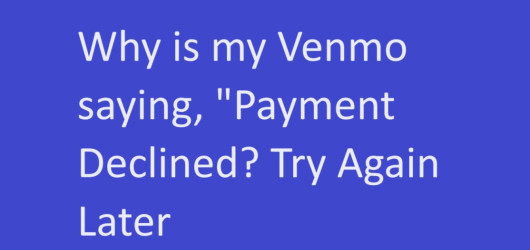Venmo Send Money Fee: Send & Receive Payments Online
 Venmo does not charge for sending money from a linked bank account, debit card, or your Venmo account. There is a 3% fee for sending money using a linked credit card Does Venmo charge a fee to send money? Venmo send money fee: Venmo generally lets you send money fee-free, so long as you're sending money from your Venmo balance, bank account or debit card. If you use your credit card to send money, you'll pay a 3% fee. How Safe Is Venmo and Is It Free? What Is Venmo? Venmo started out as a free peer-to-peer (P2P) payment app available for iPhones and Android phones. That service is still free, as is using Venmo to pay participating merchants, who now number in the millions. You must be 18 or older to have a Venmo account. Some other Venmo services carry a fee, however. Payments that go through a credit card account rather than a linked bank account or the user's Venmo account incur a 3% fee. There are other miscellaneous fees for transferring money instantly from Venmo to a bank and for depositing checks. Venmo also issues a debit card and a credit card, both of which are accepted by a growing list of local and national retailers. Those products also carry fees. Key Takeaways: -
How Does Venmo Work? After downloading the Venmo app from the Apple Store or the Google Play store, users are given options to link their Venmo accounts to a credit card, debit card, or checking account. Once enrolled, a Venmo user can instantly begin exchanging funds with any other Venmo user.1 For peer-to-peer transactions, Venmo is a middleman between the accounts of two users conducting a transaction. For example, say Addison agrees to sell Kya a bracelet for $50. Kya sends Addison the funds via Venmo, which then raises the balance in Addison's Venmo account by $50 while reducing Kya's Venmo balance by the same amount. Neither pays a fee. In this way, a Venmo balance is essentially a virtual ledger that represents funds changing hands, within the Venmo platform. Until Venmo transfers the money into the recipient's bank account, it isn't technically in that user's possession. How to Send or Request Money Money can be sent or requested by tapping the pay or request button in the Venmo app and then entering the other party's email address, phone number, or username. If you are the person receiving funds, you can either keep the cash in your balance or transfer it to your linked bank account. Using Instant Transfer rather than the traditional slower delivery adds a fee. Money can be added to your Venmo account from your bank as well as from a Venmo debit card. There's no fee for making a payment unless you use a linked credit card. Note You can make payments through the app without holding the necessary funds in your Venmo account. If a payment exceeds your current Venmo balance, the money will be taken from your linked bank account. If the transfer amount is equal to or less than your balance, the funds stored on the platform will be used. Age Restrictions for Using Venmo Individual Venmo accounts aren't yet available for younger teenagers. The app’s user agreement specifically requires users to be at least age 18. Teenagers from the ages of 13 to 17, however, are allowed a "Teen Account." Venmo's Teen Accounts are sub-accounts linked to an individual account of a person age 18 or older. The owner of the account can authorize sub-accounts and is responsible for all activity. The default setting on Teen Accounts is private so that children’s recurring purchases, locations, and payments aren’t accessible to the public. What Are Venmo's Fees? Opening a Venmo account is free and there are no monthly fees. As noted, a simple Venmo transaction from a user's bank account, Venmo debit card, or Venmo cash balance is free of charge. If a credit card is used to pay, Venmo charges the sender a 3% fee. Other services, listed below, carry additional charges: - Instant Transfer Fees You can Instant Transfer money from your Venmo account to any U.S. bank account or participating credit card account for a fee of 1.75%. "Instant" means 30 minutes or less in this case. You can avoid this fee by choosing the standard option, which is free and takes three to five business days. Credit Card Charges Venmo introduced its own credit card in 2020, and it carries a variable but steep interest rate just like most other credit cards. The interest rate as of Aug. 31, 2023, is 20.49% to 29.49%, depending on the credit rating of the applicant. Cash advances cost the greater of $10 or 5% of the amount. Balances on cash advances carry an APR of 29.49% plus the current prime rate.10 The credit card comes with a cash-back feature of 3% on your "top spend" category, 2% on your second most-used category, and 1% on everything else. You can use your Venmo debit card free of fees as long as you don't use it to withdraw cash from an out-of-network ATM and refill it only from your linked bank account or your Venmo balance. Debit Card Charges The Venmo debit card, issued in partnership with Mastercard, is free to use except for some ATM fees, which you can avoid if you're careful. ATM withdrawals are free from the MoneyPass network but cost $2.50 each from a domestic out-of-network ATM. Further, a $3 over-the-counter withdrawal fee applies when a signature is required for a withdrawal at a bank or financial institution. There are no annual or monthly fees, processing fees, or interchange fees. Merchants pay the transaction fees. How Long Does It Take to Send and Receive Money?
The Social Side of Venmo Venmo has dominated the P2P payment market by making the transfer of funds fun and interesting. Users can energize the exchange by using emojis to describe their payments or requests. For example, if one friend fronts their buddy the cost of a hamburger, the friend can issue a Venmo payment back to them, adding a burger emoji as a playful gesture.15 That can take the awkwardness out of asking your friend to pay back their part of the meal tab. How Does Venmo Make Money? Venmo derives a significant pot of revenue from the per-transaction fees that it charges merchants. Thanks to PayPal's infrastructure, Venmo is available at more than 2 million merchants.16 Venmo charges merchants a 1.9% fee, plus 10 cents per transaction. Companies are willing to pay these rates due to the number of new customers Venmo brings to their doors. Venmo also offers participating merchants a higher social media profile.14 Another stream of merchant revenue is derived from the Pay-With-Venmo button that can integrate into other apps for in-app purchases. For example, Uber allows its app users to pay for rides and Uber Eats using Venmo without leaving the Uber app. Uber pays Venmo a fee for each transaction. Plus, Venmo makes money from consumers—those who pay for instant transfers or use a credit card to fund payments. Venmo earns money from the Venmo credit card from interchange fees charged to merchants and from interest and fees charged to cardholders. Is Venmo Safe? All Internet-connected applications are vulnerable to security breaches. Therefore, Venmo and every other app that links directly to consumers' bank accounts must be held to the highest security standards. Venmo has taken measures to protect its users from theft. However, your account still could be vulnerable if you share your password, lose your phone, or fall victim to a scam. Venmo uses data encryption technology to protect users against unauthorized transactions while storing user information on servers in secure locations. The mobile payment service also gives users the option to log out of lost or stolen phones and to set up personal identification number (PIN) codes for mobile applications. Unfortunately, hackers and scammers have been able to circumvent these safeguards. After gaining access to a user's account, hackers can easily transfer the user's Venmo balance to a new bank account. And by changing the user's linked email address, hackers can reroute a user's transaction notifications, leaving them in the dark until the bank finally notifies them of balance changes long after thefts occur. |
Abone ol ve malalelerin yayınla:











